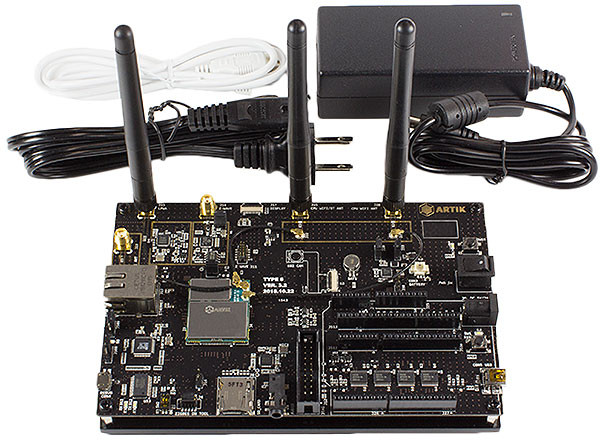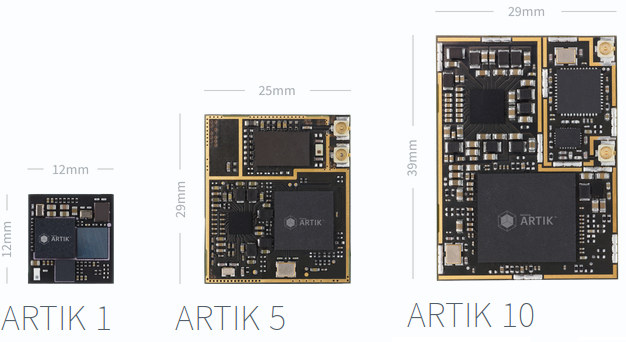Samsung Artik IoT boards will finally start selling on February 22 via Digikey. With the many fascinating developments in the IoT space over the year, you’d be forgiven if you completely forgot about Samsung Artik boards. So let’s have a quick recap.
The Korean company previously announced three boards all supporting Bluetooth LE:
- Artik 1 – Ineda Systems Dual Core microAptiv MIPS32 processor with 1MB on-chip RAM, no GPU, and 4MB SPI flash
- Artik 5 – Dual core Exynos ARM processor @ 1GHz with ARM Mali 400 MP2 GPU, 512MB RAM and 4GB eMMC flash (both on-chip), with WiFi & Zigbee/Thread connectivity
- Artik 10 – Octa core Exynos processor with 4x ARM Cortex A15 @ 1.3GHz, 4x ARM Cortex A7 @ 1.0 GHz with ARM Mali-T628 GPU, 2GB LPDDR3 (on-chip), 16GB eMMC flash, and WiFi & Zigbee/Thread connectivity
Samsung also partnered with multiple companies working on:
- Operating Systems – Tizen, Nucleus Real Time OS (for Artik 1), Fedora Linux, and Snappy Ubuntu Core.
- Tools and Services
- Arduino web-based development environment
- Temboo for cloud connectivity and automatic code generation.
- Medium One’s workflow tools for analytics and visualization
- Sensory’s speaker-independent on-device TrulyHandsfree Voice Control technology
- Soundhound’s contextual natural language and voice recognition engine
- Vayyar’s 3D imaging sensor technology.
- Cloud – Microsoft Azure IoT Suite and IoT Hub; Samsung SAMIIO + the Open Data Exchange platform
- Security – TEE support (Trusted Execution Environment) with Trustonic
You can find the SDK, documentation, and community forum on Artik developer’s page.

Artik 1 and Artik 10 prices are not unavailable, 4 days from the launch… however Artik 5 kit is already sold for $99.99, and includes a baseboard, Artik 5 modules, three antennas for WiFi, Bluetooth and Zigbee, as well as a power supply and a USB cable.

Jean-Luc started CNX Software in 2010 as a part-time endeavor, before quitting his job as a software engineering manager, and starting to write daily news, and reviews full time later in 2011.
Support CNX Software! Donate via cryptocurrencies, become a Patron on Patreon, or purchase goods on Amazon or Aliexpress





